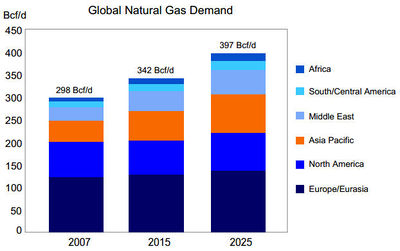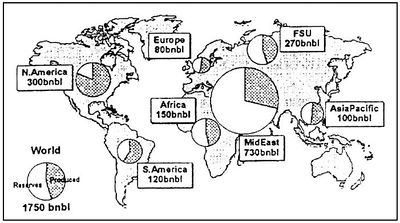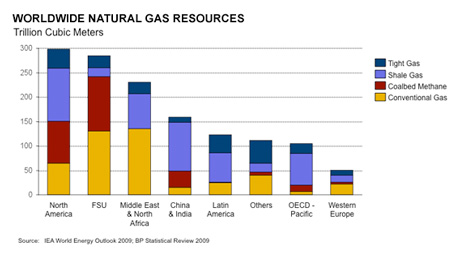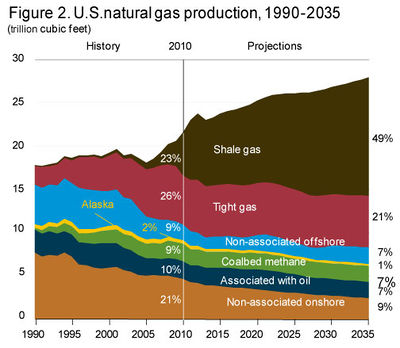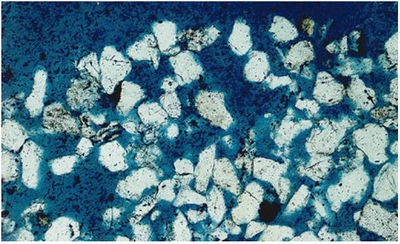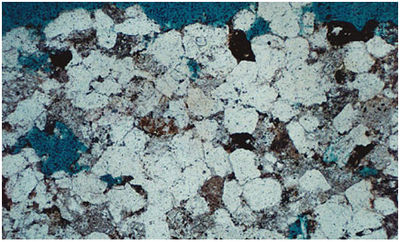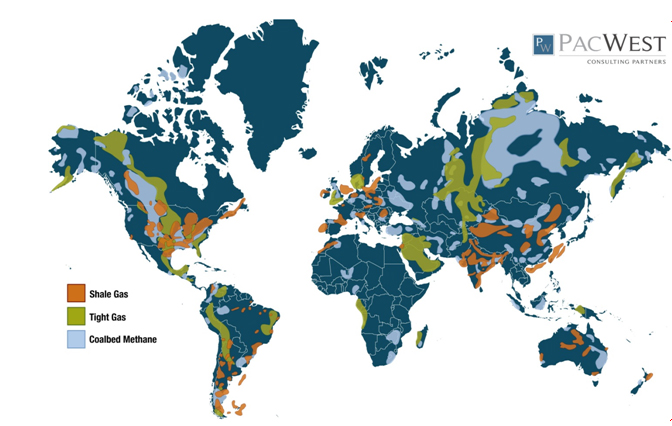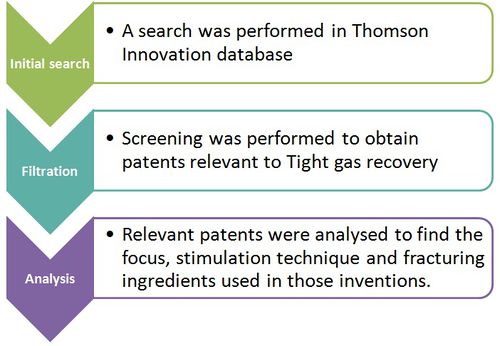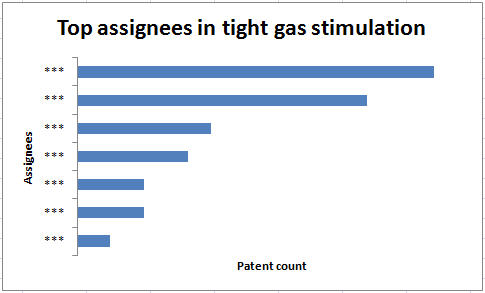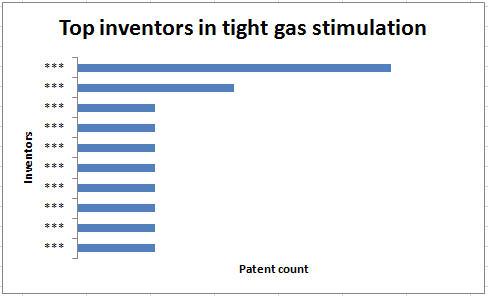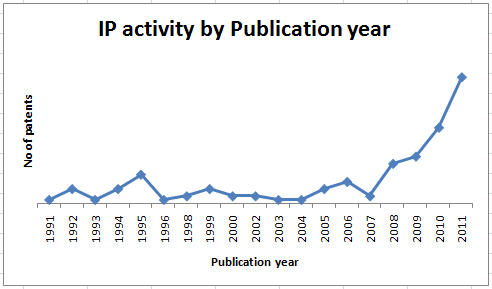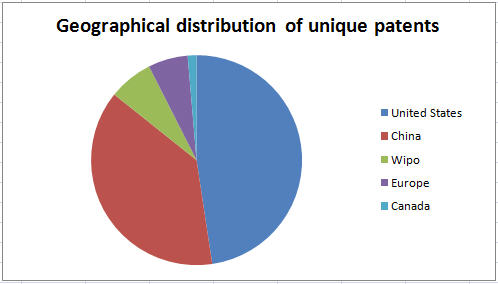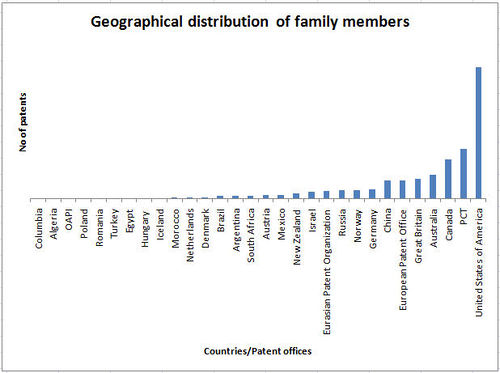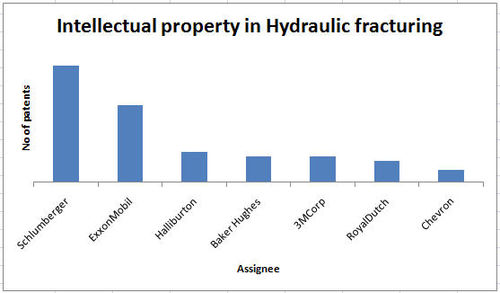Tight Gas Fracturing Technology and Patent Report
Contents
[hide]Background
Introduction
Global demand for natural gas is increasing day by day as due to rapidly growing gas market of developing countries. As more nations are switching to environmentally cleaner fuels to maintain the economic growth and reducing the impact of increasing high oil price. Natural gas is emerged as an excellent environmentally clean fuel as it emits 43% fewer carbon emissions the coal and 30% fewer emissions than oil for each energy delivered. In order to fulfill the increasing demand of energy requirement and reducing greenhouse gas emission. “The quickest and cheapest way to cut CO2 emissions from the global power sector is to grow the presence of natural gas,” said Shell’s exploration Chief Malcolm Brinded in a speech late last year. Shell-Malcolm Brinded
Global Natural Gas Demand
According to the U.S. Energy Information Agency (EIA) latest report the global demand for natural gas is expected to grow significantly as more nations are switching to environmentally cleaner fuels such as Natural Gas. Majority of the rapidly growing gas markets are in emerging economies in Asia, particularly India and China, the Middle East and South America. EIA also shows worldwide natural gas demand grew by 57 Bcf/d from 2000 to 2007, nearly 25%. The EIA also projects global natural gas demand to grow over 40 Bcf/d by the year 2015, and projects a further growth in demand of over 50 Bcf/d by 2025.
Outlook for LNG.pdf EIA-Report
Current Scenario
Bentley R. W., 2002 of The Oil Depletion Analysis Centre London studied on Global oil & gas depletion: An overview. It shows that the world’s production of conventional hydrocarbons will soon decline. Global conventional oil supply is currently at political and physical risk. This is because the sum of conventional oil production from all countries in the world, except the five main Middle-East suppliers, is near the maximum set by physical resource limits. A large investment in Middle-East oil production is needed to overcome this physical risk, and to fulfill the increasing demand of hydrocarbon across the globe. Figure 2 Shows the global conventional oil distribution of the world’s, conventional oil that has been consumed (dark shading), and the currently discovered reserves (light colour). The figure uses industry (proved and probable) data for reserves (not public domain ’proved’ reserves), and excludes oil yet to- find. The major concluding points from this figure shows the world is about halfway through its effective recoverable resource base and North America has burnt about three-quarters of its recoverable conventional oil resource.
For conventional gas, since less gas has been used so far compared to oil, the world will increases its dependability to gas as oil declines. Figure 3 Shows the global conventional gas distribution of the world’s, conventional gas that has been consumed (dark shading), and the currently discovered reserves (light colour). The figure uses industry (proved and probable) data for reserves (not public domain ’proved’ reserves), and excludes oil yet to- find. The major concluding points are Europe has a little way to go before its gas peak, and the world as a whole is about halfway to its gas peak. When the ’clocks’ on this figure tick round to perhaps 8 or 9 o’clock, gas decline sets in with the decline likely to be fairly steep.
Present scenario shows that with the physical resource limits and depletion of oil there is exponential increase the demand of gas. The global peak in all hydrocarbons (oil plus gas) is likely to be in about 10 or so years. Thus there is do or die situation for development of unconventional reservoir across the globe for avoiding the situation of energy crisis in the world. http://greatchange.org/ov-bentley,global_depletion.pdf Global Depletion-Bentley
Natural Gas Distribution
Worldwide Natural gas resources shows North America contain the largest reserves of 300 Trillion cubic meters in which unconventional resources is around 230 Trillion cubic meters. Former Soviet country shows second largest reserves of 270 Trillion cubic meters in which unconventional resources is around 140 Trillion cubic meters. China and India also contain the reserves of 160 Trillion cubic meters in which unconventional resources is around 145 Trillion cubic meters. African countries, Latin America, Western Europe and others show the presence of Unconventional resources.
Worldwide Natural gas resources
U.S. Energy Information Administration’s preview of its 2012 Annual Energy Outlook is the forecast for natural gas. EIA says that gas from shale and tight gas will account for 70 percent of the United States’ overall natural gas supply in 2035. It is clearly visible from the Figure 5 that there’s been a surge in shale gas production since roughly 2005. The major reason for this surge in shale gas production is due to surge in new hydraulic fracturing and horizontal drilling techniques, which helps in unlocking vast shale gas formations in states including Pennsylvania, North Dakota and Texas. And similar development is dawning in Ohio and other states too of North America.EIA-Shale report
Tight Gas
- Tight gas refers to natural gas reservoirs locked in extraordinarily impermeable, hard rock, making the underground formation extremely "tight." Tight gas can also be trapped in sandstone or limestone formations that are typically impermeable or nonporous, also known as tight sand. In other words, the pores in the rock formation in which the gas is trapped are either irregularly distributed or badly connected with overly narrow capillaries, lessening permeability or the ability of the gas to travel through the rock. Without secondary production methods, gas from a tight formation would flow at very slow rates, making production uneconomical.
- While conventional gas formations tend to be found in the younger Tertiary basins, tight gas formations are much older. Deposited some 248 million years ago, tight gas formations are typically found in Paleozoic formations. Over time, the rock formations have been compacted and have undergone cementation and recrystallisation, which all reduce the level of permeability in the rock. Tight gas-Rigzone.
Conventional and Unconventional Reservoirs
Conventional reservoirs are those that can be produced at economic flow rates and that will produce economic volumes of oil and gas without large stimulation treatments or any special recovery process. Conventional reservoir is essentially a high to medium permeability reservoir in which one can drill a vertical well, perforate the pay interval, and then produce the well at commercial flow rates and recover economic volumes of oil and gas.
Unconventional reservoir is one that cannot be produced at economic flow rates. Typical unconventional reservoirs are tight-gas sands, coal-bed methane, heavy oil, and gas shales. Unlike conventional reservoirs, which are small in volume but easy to develop, unconventional reservoirs are large in volume but difficult to develop. Increasing price and the improved technology are the key to their development and the future. Unconventional resources are probably very large, but their character and distribution are not yet well understood. It is known to exist in large quantity but does not flow easily toward existing wells for economic recovery.
Increase in cost and technological challenges when moving from conventional to unconventional gas recovery methods. Tight Gas Reservoirs--GC Naik.
- Conventional gas picture: Thin section of a conventional sandstone reservoir that has been injected with blue epoxy. The blue areas are pore space and would contain natural gas in a producing gas field. The pore space can be seen to be interconnected so gas is able to flow easily from the rock.
- Unconventional gas picture: Thin section Photo of a tight gas sandstone. The blue areas are pores. The pores are irregularly distributed through the reservoir and the porosity of the rock can be seen to be much less than the conventional reservoir.
Unconventional Gas Resources Typical unconventional reservoirs are
- Tight-gas Sands - formed in sandstone or carbonate (called tight gas sands) with low permeability which prevents the gas from flowing naturally.
- Coal-bed Methane - formed in coal deposits and adsorbed by coal particles.
- Gas Shales - formed in fine-grained shale rock (called gas shales) with low permeability in which gas has been adsorbed by clay particles or is held within minute pores and microfractures.
- Methane Hydrates – a crystalline combination of natural gas and water, formed at low temperature and high pressure in places such as under the oceans and permafrost
Properties of Tight Gas
| S. No | Properties of Tight Gas | |
| 1 | Matrix permeability | 1 µD to 0.1 mD |
| 2 | Porosity | 3-5% to 15-20 % (effective) |
| 3 | No or limited natural flow | Typically the initial flow before stimulation is less than 0.5 MMscfd (~15.000 Sm3/d) |
Source: Total, EBN – TNO Tight Gas Symposium
Map of unconventional reserves (Shale,Tight,Coalbed methane) in the world
- The world map representing unconventional gas reserves in various regions. It includes Shale gas, Coalbed methane and Tight gas.
Distribution of Tight Gas across the world
| S.No | Region | Tight-Sand Gas Volume (Trillion-cubic feet) |
| 1 | North America | 1,371 |
| 2 | Latin America | 1,293 |
| 3 | Western Europe | 353 |
| 4 | Central and Eastern Europe | 78 |
| 5 | Former Soviet | 901 |
| 6 | Union Middle East and North Africa | 823 |
| 7 | Sub-Saharan Africa | 784 |
| 8 | Centrally planned Asia and China | 353 |
| 9 | Pacific (Organization for Economic Cooperation and Development) | 705 |
| 10 | Other Asia Pacific | 549 |
| 11 | South Asia | 196 |
| 12 | World | 7,406 |
Recovery of Tight Gas
The steps involved in tight gas recovery are:
- Seismic investigation: Extensive seismic data is gathered and analyzed to determine where to drill and just what might be located below the earth's surface. These seismic surveys can help to pinpoint the best areas to tap tight gas reserves. Not only providing operators with the best locations for drilling wells into tight gas formations, extensive seismic surveys can help drilling engineers determine where and to what extent drilling directions should be deviated.
- Drilling: In a tight gas formation, it is important to expose as much of the reservoir as possible, making horizontal and directional drilling a must. Here, the well can run along the formation, opening up more opportunities for the natural gas to enter the wellbore.A common technique for developing tight gas reserves includes drilling more wells. The more the formation is tapped, the more the gas will be able to escape the formation. This can be achieved through drilling myriad directional wells from one location, lessening the operator's footprint and lowering costs.
- Production Stimulation: After seismic data has illuminated the best well locations, and the wells have been drilled, production stimulation is employed on tight gas reservoirs to promote a greater rate of flow. Production stimulation can be achieved on tight gas reservoirs through both fracturing and acidizing the wells.
- Hydraulic Fracturing: Fracturing, also known as "fracing," a well involves breaking the rocks in the formation apart. Performed after the well has been drilled and completed, hydraulic fracturing is achieved by pumping the well full of frac fluids under high pressure to break the rocks in the reservoir apart and improve permeability, or the ability of the gas to flow through the formation.
- Acidizing: Acidizing the well is employed to improve permeability and production rates of tight gas formations. Acidation involves pumping the well with acids that dissolve the limestone, dolomite and calcite cement between the sediment grains of the reservoir rocks. This form of production stimulation helps to reinvigorate permeability by reestablishing the natural fissures that were present in the formation before compaction and cementation.
- Deliquification: Furthermore, deliquification of the tight gas wells can help to overcome some production challenges. In many tight gas formations, the reservoirs also contain small amounts of water. This water can collect and undermine production processes. Deliquification is achieved in this instance through artificial lift techniques, such as using a beam pumping system to remove the water from the reservoir, although this has not proven the most effective way to overcome this challenge.
Challenges for Tight Gas Recovery
- During the last decade new technologies as 3-D seismic, horizontal drilling, and improved fracture stimulation have had significant impacts on natural gas production in many tight gas reservoirs in Middle East and North Africa. Some of the challenges in this recovery are:
1) Sub-Surface Understanding
2) Formation Evaluation Technology
3) Drilling Technology
4) Completion & Stimulation Technology
5) Environmental safety
- Geomechanics and Sub-Surface Understanding: Fundamental to any improvement in performance is done by having a clear understanding of the sub-surface environment. Understanding permeability, although at very low values compared to conventional reservoirs, is a key to maximizing productive capabilities. Subtle differences in tight gas reservoir properties can result in large changes in permeability, and mark the difference between productive and non-productive intervals.Geomechanics and subsurface understanding is a critical component in understanding the nature of the formation. All companies recognise the need to use geomechanics to assess natural fracture patterns.
- Formation Evaluation Technology: The objectives of Formation Evaluation are,to ascertain if commercially producible hydrocarbons are present, determine the best means for their recovery, to derive lithology and other information on formation characteristics for use in further exploration and development. Lack of accuracy for all porosity logs. There are strong limits to the application of NMR logging in low porosity, low permeability gas bearing formation.
- Drilling Technology: The challenge in any tight gas development is to use technology to push up the estimated ultimate recovered volume per well, and the produced volumes (flow), while simultaneously pushing down costs. Specialized drilling practices, application of drill bits for less wellbore damage , Specialized drilling fluids are few challenges that is to be overcomed.
- Completion & Stimulation Technology: One of the most important areas where technology can make a difference, is the ability to make small but extensive fractures in the correct places in the tight rock (‘fraccing’). This provides the gas molecules with a passage to move more easily through the reservoir to the wellbore. Fracturing techniques use a significant amount of energy to create the pressure used to crack the rock open. The first hydraulic fracturing job to be run commercially in the 1940s required just a few hundred horsepower. More recently, in examples such as the Pinedale field, power requirements can be as high as 25,000 horsepower, and costs can represent up to 30% of the well costs. Any possibility to make this more efficient has significant cost implications.
- Environmental Safety: Drilling of hundreds of wells represents a major environmental and safety challenge. Shell is tackling this challenge and is focused on improving well performance and surface engineering, which will push the business forward in a sustainable manner. Tight Gas Developments-IGU.org, Unconventional gas-NPC.org
Taxonomy for various technical challenges in tight gas recovery
Methodology for Patent Search
A detailed search strategy was formulated to extract relevant patents in the area. Keywords were obtained from some relevant patents, journal articles, company websites and other thesauri. Class-codes were obtained from the background reading and citation check of few relevant patents and from different other databases like USPTO, WIPO and Espacenet. Class-codes related to drilling of boreholes and well development was taken into consideration. Comprehensive search strategy was made using the combination of different keywords and complimentary class-codes in order to obtain all the relevant patents and at the same time keep away from irrelevant records.
Process-flow for patent analysis
Database used: Thomson Innovation
Countries Covered: US Grant, GB App, US App, FR App, WO App, DE Util, EP Grant, DE Grant, EP App, DE App, JP Util, JP Grant, JP App, CN Util, CN App, KR Util , KR Grant, KR App, DWPI
Years searched: Priority date: 1990-01-01 to 2011-12-22
Date of search: 22nd December 2011
Keywords: The keywords used for different concepts are
- Tight Gas: Tight gas, tight sand, tight carbonate, tight formation, tight deposit, tight strata, tight medium, impermeable formation, impermeable deposit, impermeable strata, impermeable medium, impermeable reservoir etc.
- Stimulation: Stimulation, fracturing etc.
Insights from patent analysis
All the patents obtained from the database were filtered to find out the most relevant patents, this process included going through the full text of the patent. Relevant patents related to stimulation technique for tight gas formations were found. This was followed by a detailed analysis of the relevant records. All the patents were analyzed to capture the focus of the patent, stimulation technique described in the invention and the fracturing ingredients used in the invention. The analyses of the patents lead to following observations:
Top Assignees
Schlumberger, Exxonmobil and Halliburton feature in this list.
IP Activity
The publications of patents in the last were nearly stagnant till 2007 after which one can witness a sudden surge in publication related to tight gas stimulation. For the years 1997 and 2001 there was no publication of patents related to tight gas stimulation. The last 3 years (2008-2011) has witnessed a sudden growth of publication activity, the highest being in 2011.
The IP activity by priority year saw a sudden surge in activity in the year 1994 and thereafter from 2005 onwards, where a significant IP activity was observed. The numbers are more likely to change when patents claiming priority over the last 20 years are published. There was no IP activity observed in the year 1996.
Geographical Distribution of patents
a) By unique families Since the unique family retrieved from Thomson Innovation Database was downloaded by keeping US as a first priority, hence one can see that US leads in the chart.
b) Total patent families filed across the globe
As shown in the above figure, United States has the highest filing of patent families filed across the globe. The filing spread is seen across North and South America, Europe, Russia and Australia. PCT filing also remains an important choice of assignees when it comes to filing patent globally.
Technology and Scientific Information Search Strategy
A search for extracting scientific articles was conducted.
Database used: Engineering Village (Compendex)
Scope: Subject/Title/Abstract
Years Searched: 1990-2012
Date of search: 02nd January 2012
Criteria for filtering: Only those articles related to stimulation or fracturing techniques for tight gas recovery were considered as relevant. Articles related to modeling were considered as OFF target documents. Duplicate articles were removed.
Taxonomy for patent analysis for tight gas recovery
Hydraulic Fracturing
Graphical Representation of Assignee's holding patents of Hydraulic fracturing
Schlumberger holds the maximum no. of patents 27 whereas the least no. of patents 3 are held by Chevron.
Table: Hydraulic fracturing patent of different Companies.
| Hydraulic Fracturing | |||
| S.No | Assignee | Patent | Comment |
| 1 | Halliburton | US20110209868A1 | Fracturing of stress altered formation using signaling subsystem communicably coupled with injection tools installed in the well bore. |
| US20090288833A1 | Fracturing of multiple ultra-shot radius laterals from a parent well | ||
| **** | **** | ||
| **** | **** | ||
| **** | **** | ||
| 2 | Schlumberger | **** | **** |
| **** | **** | ||
| 3 | #### | **** | **** |
| 4 | #### | **** | **** |
| 5 | #### | **** | **** |
These sections now concentrate on the work done by the companies or institutes.
Halliburton
US20110209868A1 titled "Fracturing a stress-altered subterranean formation" by Halliburton. Fracturing of a stress- altered subterranean formation is difficult to perform. Fracturing of stress altered formation using signaling subsystem communicably coupled with injection tools installed in the well bore.
Signaling subsystem adapted to transmit control signals from a well bore surface to each injection tool to change the state of the injection tool according to stress condition.
It can modified stresses, thus fracture network can be created along a substantial portion of a horizontal well bore.
US20090288833A1 titled "System and methods for constructing and fracture stimulating multiple ultra-short radius laterals from a parent well" by Halliburton. Hydrocarbons are often dispersed in a stacked sequence in the reservoir. The reservoir also contains water bearing zones. Conventional equipment cannot be used for drilling and stimulation of multi lateral well as they are very time consuming, and expensive in nature. It provide a systems and methods for constructing multiple ultra-shot radius laterals from a parent well and stimulating the subterranean zones intersected by multiple lateral wellbores extending outwardly from one or more parent wellbores by injecting a stimulation fluid into the lateral wellbores; and stimulating the zones intersected by the lateral wellbores.
US7278486B2 titled "Fracturing method providing simultaneous flow back" by Halliburton. The top down completion method has several drawbacks:
-a larger ID tubing is required for the fracturing fluid to be pumped down the tubing which is difficult to handle in the wellbore compared to smaller pipe sizes (1.5-2.0 inch diameter) and is more expensive.
-previously placed fracturing fluid is produced up the annulus, which impinges against the tubing string and therefore can cause damage to the tubing string.
- the previously fractured zones are above the packer and flowing these zones back may result in proppant building up on the top of the packer.
Method of fracturing a multi-zone subterranean formation utilizes bottom up approach comprising, the steps of first perforating the pay zone by injecting a hydraulic fluid into the subterranean formation through the jet ports of the hydra jetting sub and isolating this pay zone from the adjacent pay zone using packers by moving the having a bottom-hole assembly ("BHA") downhole below the zone, second is fracturing by pumping the fracturing fluid down an annulus formed between the wellbore and a tubing string and then flowing back the fracturing fluid to the surface through the BHA and tubing string. The second zone to be treated next is above this treated zone.
US6119776A titled "Methods of stimulating and producing multiple stratified reservoirs" by Halliburton. The production of hydrocarbons from multiple stratified hydrocarbon reservoirs has been a low economic return venture for oil and gas exploitation companies because
-the hydrocarbons are contained in numerous relatively small reservoir compartments, many of which cannot be practically or economically penetrated by well bores.
-the reservoir formations containing the hydrocarbons have relatively low permeabilities.
Methods of stimulating and producing multiple stratified hydrocarbon reservoirs having numerous separate reservoir compartments are provided.
-It comprise steps for the drilling a first well bore into a lower part of the reservoir having a horizontal portion which intersects a previously drilled second well bore therein. Fracture is formed extending into two or more reservoir compartments from the horizontal portion of the third well bore for conducted hydrocarbons in the reservoir into the horizontal portion of the first well bore from where the hydrocarbons flow into the second well bore and are withdrawn.
US7001872B2 titled "Subterranean formation treating fluid and methods of fracturing subterranean formations" by Halliburton. Use of high viscous fluids as a fracturing fluid, containing gelling and crosslinked agent, show some serious problem such as
-For maintaining the viscosity of fluid, the concentration of the gelling agent may be increased, which results in, increased costs and pumping of the fracturing fluids more difficult.
- Sometimes, the filter cake produced from the fluid on the walls of well bores shows difficulty in cleanup.
- Higher operating and fixed cost as they required expensive metering devices and other similar equipment.
Improved method for treating subterranean well formations, by using treating fluid concentrates which comprise of water, fully hydrated depolymerized polymer and a crosslinking agent.
-gelling agent are replaced by depolymerized polymer and these fluid are less viscous in nature.
Schlumberger
WO2011143053A1 titled "Methods for unconventional gas reservoir stimulation with stress unloading for enhancing fracture network connectivity" by Schlumberger. Conventional method shows decrease in hydrocarbon production due to damage of surface regions of the fractures, leading to decrease in the permeability of the formation. Improved method of hydraulic fracturing to initiate a fracture in the shale by injecting a treatment fluid in the fracture to partially destabilize and remove the shale and then repeating the step of fracturing in the shale. It helps in minimizing the damage of the fracture surface.
US6508307B1 titled "Techniques for hydraulic fracturing combining oriented perforating and low viscosity fluids" by Schlumberger. Conventional method for fracturing very tight gas formation by using perforation in combination of high viscosity fluid shows-
-Unoriented perforations, results in fracturing fluid does not take the most direct route into the fracture and leads to fracture the formation directly opposite to the perforation. This effect often known as near-wellbore tortuosity is highly undesirable for well completion.
-Use of high viscosity fluids results in higher pumping cost, damaging to the newly propped fracture. And requires additional breakers, thus further increasing the cost of the treatment.
New method is a combination of the steps of properly orienting perforations and creating a propped fracture by means of a low viscosity fracturing fluid.
-Advantage of using oriented perforating are performing fracturing in pay zone area, minimizing sand production in weak formations, prevent damage to the equipment, such as electrical cables, fiber optic lines, submersible pump cables, adjacent production tubing or injection pipe.
-Low viscosity fluid leads to lower pumping and treatment cost.
US5295393A titled "Fracturing method and apparatus" by Schlumberger. Conventional method such as micro hydraulic fracturing technique for fracturing an underground formation, suffer from certain problems such as unwanted fracturing of the non pay zone area due to
-Pumping excessively at higher rates where control of the pressure development in the test interval might be less accurate.
-Use of packers also leads to unwanted fracturing of the formation and the damage of packers was also observed.
Method and apparatus used to fracture an underground formation that is traversed by a borehole. Traversing a borehole helps in
-Proper orientation of the fracture,
-Reducing the breakdown pressure for the hydraulic fracturing operation and also reducing the damage occurring at the straddle packers,
-Low energy storage in the fluid in the system so allowing better control.
US20090065253A1 titled "Method and system for increasing production of a reservoir" by Schlumberger. Complex fractures and proper fracture geometry generally give improved production rates.
Complex fractures increases the tortuosity of the flow paths, proppant may not be sufficient to prop the fractures developed by them as proppants may not be adequately delivered to all of the branches of the fracture, or the density of the proppant delivered might be insufficient to maintain conductivity. Those portions of the fracture might then close, thereby reducing fracture conductivity.
-So, a need exists for a method, apparatus and system to promote the self-propping of complex fractures and complex fractured regions,
Generating proper fracture geometry, the conditions affecting the treatment of the individual reservoir (e.g., near-wellbore effects, reservoir heterogeneity and textural complexity, in-situ stress setting, rock-fluid interactions) should be determined before generating a fracture.
-So, a need exists for a method, apparatus and system to detect the conditions required for generating induced fracture complexity, high fracture density, large surface area during fracturing, identify unique conditions of reservoir properties, in-situ stress, and completion settings to determine a design of fracture treatments that specifically adapt to these conditions.
The method to increase and/or optimize production of a reservoir involves first the determination of the textural and induced fracture complexity of the reservoir, then follows performing the first operation based on the complexities wherein the first operation introduces shear stress into the formation which can be either fracturing wellbores with cement slurries or proppant, multilateral drilling, inducing thermal stresses and then creating fractures. Also, performing the second operation which can again be either fracturing or multilateral drilling till the satisfied production rate is reached.
US20090065198A1 titled "Method and system for increasing production of a reservoir using lateral wells" by Schlumberger.
Complex fractures and proper fracture geometry generally give improved production rates.
Complex fractures increases the tortuosity of the flow paths, proppant may not be sufficient to prop the fractures developed by them as proppants may not be adequately delivered to all of the branches of the fracture, or the density of the proppant delivered might be insufficient to maintain conductivity. Those portions of the fracture might then close, thereby reducing fracture conductivity.
-So, a need exists for a method, apparatus and system to promote the self-propping of complex fractures and complex fractured regions,
Generating proper fracture geometry, the conditions affecting the treatment of the individual reservoir (e.g., near-wellbore effects, reservoir heterogeneity and textural complexity, in-situ stress setting, rock-fluid interactions) should be determined before generating a fracture.
-So, a need exists for a method, apparatus and system to detect the conditions required for generating induced fracture complexity, high fracture density, large surface area during fracturing, identify unique conditions of reservoir properties, in-situ stress, and completion settings to determine a design of fracture treatments that specifically adapt to these conditions.
Method comprises knowing the textural and induced fracture complexity through software’s, drilling the first wellbore comprising a lateral well in the formation based on the complexity data, drill a second wellbore and fracture the second wellbore, inject a material (cement) that fills the fractures, pressurizing the fracturing fluid in the second wellbore, the fracture in the second wellbore penetrates in the first wellbore to induce a fracture in the first wellbore.
The plan for introducing shear stress into the formation include fracturing wellbores with cement slurries or proppant, preventing closure, to alter the stress conditions prior to a subsequent fracture.
WO2011070453A2 titled "Method for increasing fracture area" by Schlumberger. Existing fracture techniques are limited in providing an optimal effective fracture area. A method of improving the fracture area by a fracturing treatment, comprises the steps of first performing an evaluation of textural heterogeneity of a formation; Creating step over’s by delivering a fracture treatment material downhole at high pressure, propogating a fracture from step over’s and closing (isolating) the respective step over and re-pressurizing the fracturing material to create more step over’s and thus the fracture complexity and formation conductivity.
WO2011081550A1 titled "Hydraulic fracturing system" by Schlumberger. Need of an inexpensive proppant materials for hydraulic fracturing of tight gas reservoir having crushable properties. Hydraulic fracturing utilizing crushable particulates, which provide sufficient and cost effective fracture conductivity dependent on closure stress, has been presented.
Crushable proppant produces more than about 20 percent fines in a crush test using hydraulic pressure, crushing can be controlled by changing rate of injection of proppant slurry.
Fine particulates are used to deliver proppant far-field (deep into the reservoir away from the wellbore) into a complex fracture network, where no high strength proppants can be placed via current practices.
Integrated Petroleum Technologies
US7032671B2 titled "Method for increasing fracture penetration into target formation" by Integrated Petroleum Technologies. Reliable method of propagating a fracture farther from the well-bore into a target formation and inhibiting the growth of the fracture in the non-pay zones (water bearing zones) is required. The geometry of the fractures is increased by creating a zone of increased in-situ stress at a vertical distance from the target zones and hydraulically fracturing the target zones. The fracture in the target zone then propogates vertically in the stress induced zone till the limit set by the zone of increased stress is reached after which the additional fracturing fluid which is pumped propagates the main fracture more laterally and farther from the well.
Phillips Petroleum Company
US5054554A titled "Rate control method for hydraulic fracturing" by Phillips Petroleum Company. Production of fluids from the fractured zone or area is more a function of fracture conductivity in high permeability reservoir, hence increased fracture length is not as important as increased fracture width. Therefore a need exist to provide a fracture which will maximize the production of hydrocarbon fluids from earth formations having moderate to high permeability by increasing the fracture width. It provides an improved method of hydraulic fracturing of formations to produce hydrocarbon fluids by controlling the rate of injection to form the desired fracture length and width in moderate permeability and high permeability formations.
Union Oil Company
US5472050A titled "Use of sequential fracturing and controlled release of pressure to enhance production of oil from low permeability formations" by Union Oil Company. Under current economic conditions, there is a need for a more efficient process for producing oil from low permeability formations. Recovery of hydrocarbon from a low permeability formation is increased by fracturing the formation and avoiding the release of pressure from the fracture to lengthen the time so that the reservoir pressure remains above the fracture collapse pressure.
A method for producing hydrocarbon from a hydrocarbon-containing subterranean formation, includes the steps of
- drilling and casing a wellbore which penetrates the subterranean formation, perforating the casing to form set of perforations, fracturing the subterranean formation with water, steam or gas through the set of perforations; producing the hydrocarbon from the formation through the set of perforations while restricting the release of pressure from the fractured formation to lengthen the time that the reservoir pressure remains above the fracture collapse pressure; and repeating the steps till satisfactory results are produced.
The release of pressure from the formation by regulating the rate at which oil is pumped using control valves from the formation.
Information from the Article
Many authors have talked about massive hydraulic fracturing Ahmed et al. in 1979, Hanson, in 1981 and Schubarth et al. in 2006. Massive hydraulic fracturing (MHF) is a primary candidate for stimulating production from the tight gas reservoirs in the U.S. MHF is a more recent application that differs from hydraulic fracturing in that more fluid and proppant are pumped to create more extensive fractures in the reservoir. Application of MHF to increase production from the tight reservoirs has provided mixed and, in many cases, disappointing results especially in lenticular reservoirs (Hanson,1981)... [Contd]
Summary of Hydraulic fracturing
Various companies are using or developing different techniques for performing hydraulic fracturing in different operating condition and reservoirs.
